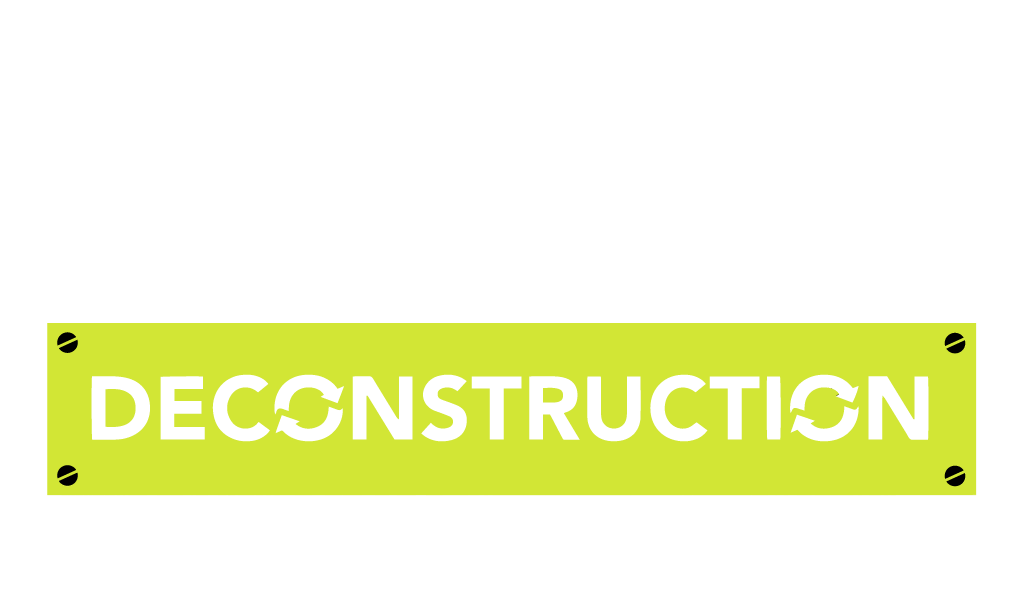How Deconstruction Helps Colorado Mitigate Climate Change
To Founder Anna Perks, something just didn’t sit right about watching a 100-year-old home in Denver be demolished and landfilled. As a local Zero Waste advocate and sustainability expert, she knew Denver, Boulder, and communities throughout Colorado were making great strides in implementing recycling and other Zero Waste policies and services. Yet, traditional demolition practices were still the norm in residential and commercial sectors all along the Front Range.
It was the moment that inspired the launch of Perks Deconstruction, now a leading sustainable demolition contractor offering deconstruction consulting services to communities in Colorado looking to make their demolition sites greener and comply with waste reduction and climate action efforts.
“I knew the C&D [construction and demolition] industry as we know it couldn’t continue on its current trajectory, and that industry would have to figure out a way to be more sustainable,” Anna said. “Now, five and a half years later, we’re seeing more cities and counties across Colorado examine their waste stream and recognize that C&D is a big portion of the pie.”
“Simply put,” Anna says, “offering residential recycling or composting measures isn’t enough for communities looking to curb their waste and climate change impacts.”
Collectively, these efforts not only aim to increase Colorado’s low recycling rate of 16%, which is half the national average, but they also help put the state on a path to mitigate climate change.
It’s not just about the landfill: How demolition waste contributes to climate change
According to the EPA, the way we produce, transport, and dispose of materials and goods — including building materials — makes up 40% of the world’s greenhouse gas emissions (GHG) that contribute to global warming. These emissions come from the energy, land, and water used to produce, transport, use, and discard of materials and goods. It’s a system that puts our limited natural resources on a one-way track from being extracted from the earth to trashed in a dump, all while generating emissions that warm the planet and contribute to climate destabilization.
Reclaimed wood and building materials also have their place as a waste-guided solution to climate change: 40%-50% of global natural resources extracted are used for housing, construction and infrastructure. By shifting construction models to include more reused and recycled materials, the C&D industry could make enormous strides in implementing sustainable resource management practices that preserve natural resources and prevent GHG emissions.
Deconstruction: A Sustainable Path for the Demolition Industry
Deconstruction is a model for sustainable resources management for building materials and other demolition waste. Deconstruction practices take into account the inherent value of building materials and household goods, preserving their value, processing them for reuse, and donating or reselling them to create local, circular economies.
Deconstruction processes also minimize waste, energy, and emissions at every stage — from material production and transportation to material disposal (i.e. reuse and recycling).
Here are 8 ways deconstruction practices help conserve natural resources, create zero waste systems, and reduce greenhouse gas emissions.
Deconstruction Reduces Waste
Traditional demolition practices generate a substantial amount of building material waste, much of which ends up in landfills. Deconstruction minimizes this waste by salvaging materials that can be reused and recycling as much as possible from what’s left. This reduction in landfill waste is crucial because landfilling biodegradable materials like wood emits methane, a potent greenhouse gas that contributes to global warming.
deconstruction Conserves Resources
Deconstruction allows for the recovery of valuable materials such as lumber, scrap metal, and bricks/masonry. Reusing these materials reduces the demand for new raw materials, which in turn lowers the energy consumption and carbon emissions associated with extracting, processing, and transporting these new materials.
deconstruction Reduces Embodied Carbon
Embodied carbon refers to the total greenhouse gas emissions generated to produce a building material. The production of building materials, especially those like concrete and steel, is highly energy-intensive and generates significant carbon emissions. By salvaging and reusing materials through deconstruction, the embodied carbon of new construction projects is reduced.
deconstruction saves Energy
Recycling materials typically requires less energy than producing new materials from raw resources. For example, recycling metals such as aluminum and steel saves substantial amounts of energy compared to extracting and processing raw ores.
Deconstruction Promotes a Circular Economy
Deconstruction supports a circular economy by keeping materials in use for as long as possible. This approach contrasts with the traditional linear economy of "take, make, dispose," which is unsustainable in the long term. A circular economy reduces environmental impacts and promotes sustainability by continually reusing materials and products.
Deconstruction Extends Carbon Sequestration
Wood and other organic materials used in construction can act as carbon sinks, storing carbon that would otherwise be released into the atmosphere. When these materials are reused instead of landfilled (where they decompose anaerobically [without oxygen] and emit methane), they continue to sequester carbon.
deconstruction Reduces Transportation Emissions
Deconstruction often involves the local reuse of materials, which can reduce the carbon emissions associated with transporting new building materials over long distances.
deconstruction creates jobs and circular Economies
Deconstruction is typically more labor-intensive than demolition, which can create more jobs and stimulate local economies. These economic benefits can foster more sustainable communities and encourage further investment in green building practices.
Deconstruction is a vital practice for reducing the C&D industry's impact on climate change. By promoting waste reduction and resource conservation and lowering carbon and methane emissions, deconstruction contributes to more sustainable building practices and helps mitigate the effects of global warming.
Read more about the environmental benefits of deconstruction on our blog.
NEW SERVICE from perks: Expert sustainable demolition and Deconstruction consulting
Contact us for expert guidance and hands-on solutions that get your demolition project approved and accomplished without a hitch, or learn more about our services.

